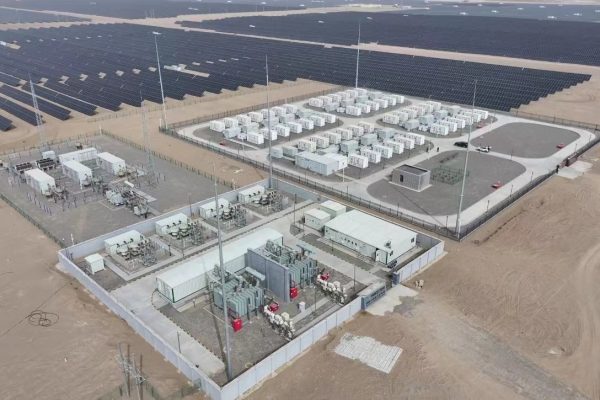The integration of photovoltaic (PV) systems with energy storage has become an increasingly popular solution for improving energy reliability, reducing costs, and enhancing sustainability. However, when operating in low-voltage (LV) environments, the reliability of PV + storage systems can be challenged by various factors, including system complexity, grid stability, and component performance.
In this article, we explore the best practices and technical considerations for ensuring reliable operation of low-voltage PV + storage systems. We will present replicable solutions, real-world case studies, and key technical insights to help system integrators, EPC contractors, and energy managers optimize their PV + storage installations for both performance and reliability.
1. Understanding Low-Voltage PV + Storage Systems
A low-voltage PV + storage system typically operates at below 1 kV (often around 48V to 600V) and is commonly used in small to medium-sized commercial, residential, and off-grid applications. These systems combine solar panels to generate electricity with batteries to store excess energy, which can then be used during non-sunny periods or when demand exceeds solar generation.
Key components of low-voltage PV + storage systems include:
- Solar Panels: Convert sunlight into electricity.
- Inverters: Convert DC (direct current) from solar panels and storage systems into AC (alternating current) used by appliances and the grid.
- Battery Storage: Store excess electricity generated by the solar panels.
- Charge Controllers: Regulate the charging process and prevent overcharging or discharging of the batteries.
- Energy Management Systems (EMS): Optimize the use of stored energy and manage power distribution efficiently.
Low-voltage systems are generally more cost-effective and easier to install compared to high-voltage systems, but ensuring their reliability requires careful design, component selection, and integration.
2. Challenges in Low-Voltage PV + Storage Systems
Operating low-voltage PV + storage systems comes with a unique set of challenges. These systems, while cost-effective and efficient, can face issues related to:
a) Battery Management and Charging Efficiency
The battery is the core of the storage system, and its performance is directly tied to the system’s reliability. Lithium-ion batteries, commonly used in low-voltage systems, offer high efficiency, long lifespan, and fast charging times, but they are sensitive to improper charging cycles, temperature fluctuations, and overcharging.
To ensure reliable operation:
- Implement battery management systems (BMS) that monitor voltage, temperature, and state of charge to prevent overcharging or deep discharging.
- Choose high-quality charge controllers to ensure efficient and safe battery charging.
b) Inverter Efficiency and Compatibility
Inverters are crucial for converting the DC output from the PV system and batteries into usable AC power. Poor inverter efficiency can significantly impact the overall system reliability. Additionally, compatibility between the inverter and other system components, such as the battery storage and solar panels, is critical for smooth operation.
To enhance reliability:
- Select inverters that are specifically designed for low-voltage systems and are compatible with the voltage range of the batteries and solar panels.
- Use maximum power point tracking (MPPT) inverters to optimize energy extraction from the solar panels under varying light conditions.
c) Temperature and Environmental Factors
In low-voltage systems, environmental conditions such as temperature fluctuations and humidity can affect both battery performance and inverter operation. For example, batteries can degrade faster at high temperatures, and inverters may experience reduced efficiency in extreme weather.
To mitigate environmental effects:
- Use climate-controlled enclosures for batteries and inverters to ensure stable operating conditions.
- Install temperature monitoring sensors to track the health of components and adjust the system’s operation if necessary.
d) Grid Connection and Stability
While many low-voltage systems are off-grid, some are designed for grid-tied operation. In grid-connected systems, maintaining stability during grid fluctuations or power outages is a common challenge. For hybrid systems that interact with both storage and the grid, the system must switch seamlessly between power sources without interruptions.
To achieve grid stability:
- Use grid-tied inverters with features like anti-islanding protection and frequency regulation to ensure stable and safe operation.
- Deploy smart energy management systems that can optimize when to discharge or charge the batteries based on grid conditions and demand.
3. Best Practices for Ensuring Reliable Operation
Achieving reliable performance in low-voltage PV + storage systems requires careful attention to system design, installation, and ongoing maintenance. Below are best practices that can help ensure smooth and consistent operation.
a) Optimal Sizing of System Components
The most critical step in ensuring reliable operation is properly sizing all components—solar panels, battery storage, and inverters—according to the energy demands and usage patterns of the facility.
- Battery sizing: Size the batteries according to the energy storage needs. The storage capacity should match or slightly exceed the expected load to ensure the system can reliably meet energy demands during low sunlight hours.
- Solar panel sizing: Ensure that the solar panel capacity is sufficient to charge the batteries during peak sun hours, while avoiding overproduction that may lead to inefficiencies.
- Inverter sizing: Choose inverters that match the system’s voltage and maximum power output to ensure efficient conversion and energy management.
b) Installation and Wiring Considerations
Proper installation is essential for system reliability. Ensure that:
- All components are correctly wired according to the manufacturer’s specifications, with special attention to voltage and current limits to avoid overloading.
- High-quality connectors and cables are used to minimize power losses and ensure long-term durability.
- Proper grounding and safety systems are installed to protect the system from electrical faults.
c) Routine Monitoring and Maintenance
Routine monitoring is essential for detecting potential issues early and maintaining the health of the system. Regular maintenance should include:
- Monitoring system performance through an Energy Management System (EMS) that provides real-time data on energy consumption, battery state of charge, and inverter performance.
- Battery maintenance: Regularly check battery voltage, temperature, and cycle count to ensure that it is operating within optimal parameters.
- Inverter inspection: Periodically check inverter performance and clean filters to ensure maximum efficiency.
- Preventative checks for environmental conditions such as humidity, temperature, and dust that may affect system components.
d) Data Logging and Analytics
To enhance system reliability, implement data logging and analytics tools to track and analyze performance over time. Collecting data on voltage, current, and temperature trends can help detect potential failures before they occur, ensuring proactive maintenance.
4. Case Study: Low-Voltage PV + Storage for an Off-Grid Facility
Background
An off-grid agricultural facility located in a remote region faced challenges related to unreliable grid power and high electricity costs. The facility used solar energy to meet its needs but required a reliable energy storage solution to ensure continuous power supply during night-time or cloudy days.
Solution
The facility implemented a low-voltage PV + storage system with the following components:
- 5 kW solar array to provide energy during the day.
- 10 kWh lithium-ion battery storage to store excess energy for night-time use.
- 2 kW inverter designed for low-voltage systems to convert DC to AC power.
- Battery management system (BMS) to monitor battery performance and optimize charging/discharging cycles.
The system was designed with an emphasis on reliability, including:
- Automated energy management to optimize when to draw power from the grid, battery storage, or solar.
- Temperature-controlled storage for batteries to extend their lifespan.
- Real-time performance monitoring through an EMS to ensure the system operates optimally.
Results
- The system provided reliable off-grid power, even during extended cloudy periods.
- The battery life was extended by maintaining optimal charging conditions, and energy savings were realized through efficient energy management.
- The facility experienced minimal maintenance costs, as the BMS continuously monitored the health of the system.
- The system provided a payback period of under 4 years, with long-term energy independence.
Achieving reliable operation in low-voltage PV + storage systems requires careful planning, quality components, and ongoing system monitoring. By following best practices such as proper sizing, temperature management, and regular maintenance, businesses can ensure that their systems operate efficiently and reliably for the long term.
For EPCs, system integrators, and energy managers, understanding the unique challenges of low-voltage systems is essential for designing solutions that meet both technical and economic goals. By focusing on system reliability and performance, businesses can harness the full potential of low-voltage PV + storage systems for energy independence, cost savings, and sustainability.









